A nonet of novel species of Monanthotaxis (Annonaceae) from around Africa
- PMID: 27698586
- PMCID: PMC5029142
- DOI: 10.3897/phytokeys.69.9292
A nonet of novel species of Monanthotaxis (Annonaceae) from around Africa
Abstract
As part of an ongoing revision of the genus Monanthotaxis Baill. (Annonaceae), nine new species are described and one variety is reinstated to species rank. Two new species from West Africa (Monanthotaxis aquila P.H.Hoekstra, sp. nov. and Monanthotaxis atewensis P.H.Hoekstra, sp. nov.), four new species from Central Africa (Monanthotaxis couvreurii P.H.Hoekstra, sp. nov., Monanthotaxis latistamina P.H.Hoekstra, sp. nov., Monanthotaxis tripetala P.H.Hoekstra, sp. nov. and Monanthotaxis zenkeri P.H.Hoekstra, sp. nov.), one new species from Tanzania (Monanthotaxis filipes P.H.Hoekstra, sp. nov.), one new species from the area around Maputo (Monanthotaxis maputensis P.H.Hoekstra, sp. nov.), one new species from the Comoro Islands (Monanthotaxis komorensis P.H.Hoekstra, sp. nov.) and Monanthotaxis klainei (Engl.) Verdc. var. angustifolia (Boutique) Verdc. is raised to species level leading to the replacement name Monanthotaxis atopostema P.H.Hoekstra, nom. nov. (not Monanthotaxis angustifolia (Exell) Verdc.). Complete descriptions, comparisons with related species, ecological information and IUCN conservation assessments are given for the new species. Five species were classified as critical endangered, two species as endangered, one as vulnerable and one as least concern, warranting the need of further collecting and studying those species.
Keywords: Africa; Annonaceae; Atewa Range; Cameroon; Comoros; Gabon; Ghana; Gilbertiella; Ivory Coast; Mayotte; Monanthotaxis; Mozambique; Ottotomo; Republic of Congo; Rondo; South Africa; Tanzania; new species.
Figures



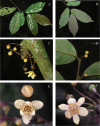
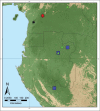
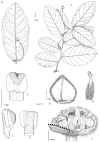


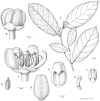

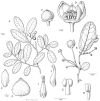
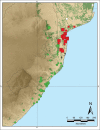
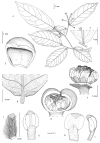
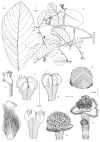
References
-
- Bachman S, Moat J, Hill A, de la Torre J, Scott B. (2011) Supporting Red List threat assessments with GeoCAT: geospatial conservation assessment tool. ZooKeys 150: 117–126. doi: 10.3897/zookeys.150.2109 - DOI - PMC - PubMed
-
- Baillon H. (1890) Observations sur quelques nouveaux types du Congo. Bulletín mensuel de la Société Linnéenne de Paris 1: 876–879
-
- Bebber DP, Carine MA, Wood JRI, Wortley AH, Harris DJ, Prance GT, Davidse G, Paige J, Pennington TD, Robson NKB, Scotland RW. (2010) Herbaria are a major frontier for species discovery. Proceedings of the National Academy of Sciences 107: 22169–22171. doi: 10.1073/pnas.1011841108 - DOI - PMC - PubMed
-
- Bissiengou P, Chatrou LW, Wieringa JJ, Sosef MSM. (2013) Taxonomic novelties in the genus Campylospermum (Ochnaceae). Blumea - Biodiversity, Evolution and Biogeography of Plants 58: 1–7. doi: 10.3767/000651913X667817 - DOI
-
- Boutique R. (1951) Annonacées nouvelles de la flore du Congo Belge et du Ruanda-Urundi. Bulletin du Jardin botanique de l’Etat, Bruxelles/Bulletin van den Rijksplantentuin, Brussel 21: 95–126. doi: 10.2307/3666813 - DOI
LinkOut - more resources
Full Text Sources
Other Literature Sources
Research Materials
